6 Best Grass Types for Knoxville
BY ABDUL WADOOD | MARCH 21ST, 2023 | KNOXILLE, LAWN CARE, TENNESSEEIf you want to increase the curb appeal of your property in Marble City, a great lawn is a must. And it all starts with choosing the right grass. Let’s take a look at the best grass types for Knoxville lawns.
In this article:
- Best grass types for Knoxville lawns
- FAQs about Knoxville grass types
- Choose the right grass type for your Knoxville yard
Best Grass Types for Knoxville Lawns
Knoxville and the entire Tennessee state are part of the transitional zone. So, what does that mean for grasses?
Winters are too cold for warm-season grasses, while summers are too hot for cool-season grasses. Generally, if your home receives a lot of sunlight, you should opt for warm-season grasses. If not, stick to cool-season grasses as they are more shade tolerant.
- Warm-season grasses grow the best during late spring and summer when the temperature is between 75 and 90 degrees Fahrenheit.
- Cool-season grasses grow best during early spring and fall when the temperature is between 55 and 75 degrees Fahrenheit.
Go through the list below and choose the best grass type for your Knoxville lawn, depending on your requirements.
1. Tall Fescue
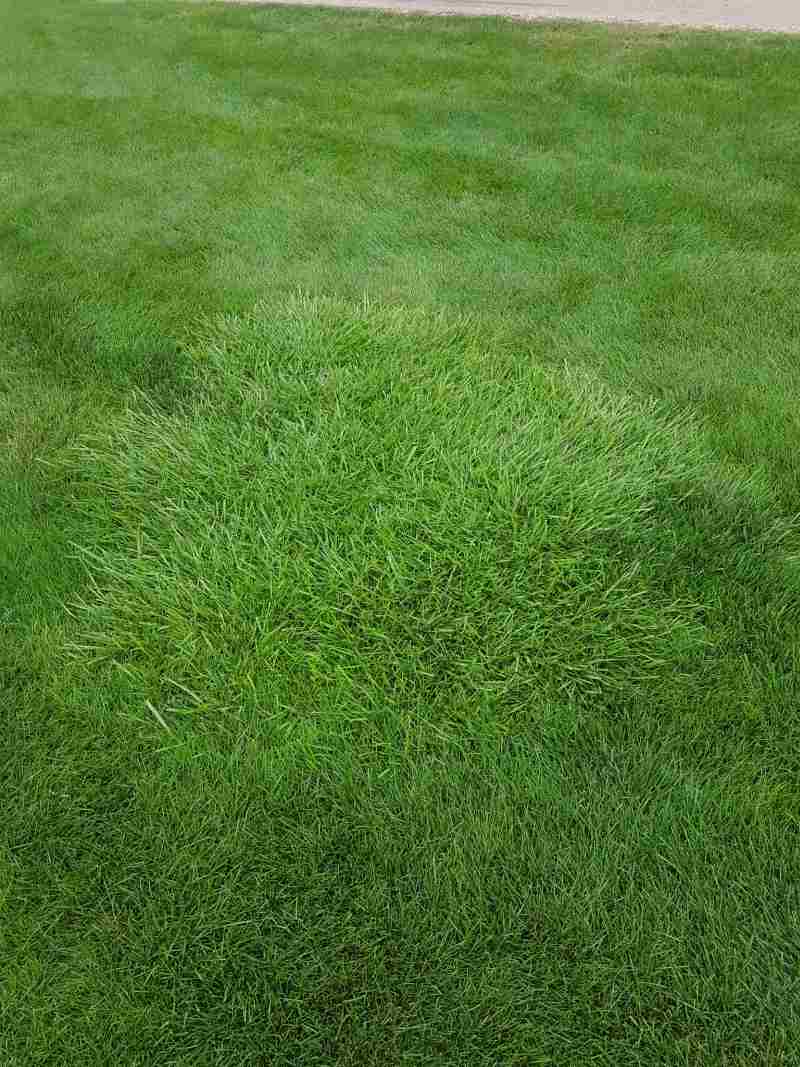
Photo Credit: Ty Haller / Flickr / CC BY 2.0
Tall fescue grass is the go-to choice for many Knoxville homeowners because it’s a highly adaptable cool-season grass. Tall fescue is heat- and drought-tolerant compared to other cool-season grasses, thanks to its 2- to 3-foot-deep root system.
Tall fescue is dark green and coarse with wide blades, making it highly durable and suitable for heavy foot traffic. It requires 6 to 8 hours of direct sunlight daily for fast, dense growth.
- Classification: Cool-season grass
- Spreads by: Produces short rhizomes but has a bunch-type growth habit
- Shade tolerance: Moderate
- Drought tolerance: Moderate to high
- Foot traffic tolerance: Moderate
- Maintenance needs: Frequent mowing. Does not produce significant thatch
- Mowing height: Set mowing height to 2 inches when the grass reaches 3 inches
- Potential for disease: Resists most diseases when properly maintained
2. Kentucky Bluegrass
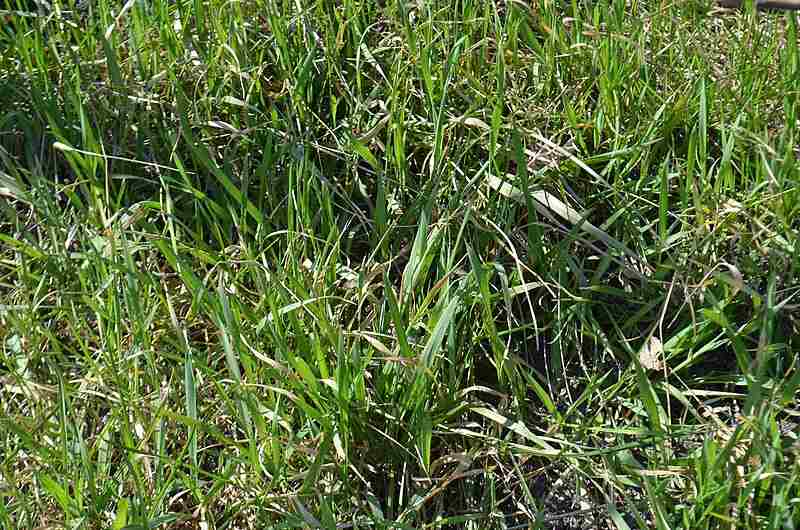
Photo Credit: Ethan2039 / Wikimedia Commons / CC BY-SA 4.0
Kentucky bluegrass (KBG) is a cool-season lawn grass widely used across the United States. It’s durable, soft on bare feet, and gives your lawn a dense appearance.
KBG has an excellent capacity for self-repair, but it doesn’t do well in shade. Kentucky bluegrass can be a great choice for Knoxville lawns when mixed with tall fescue seed mixture at a ratio of 90:10 (tall fescue to KBG).
- Classification: Cool-season grass
- Spreads by: Rhizomes
- Shade tolerance: Low
- Drought tolerance: Moderate
- Foot traffic tolerance: Moderate
- Maintenance needs: Moderate mowing frequency and high fertilization needs
- Mowing height: 2.5 to 3.5 inches
- Potential for disease: Moderate to high. Prone to several diseases, such as dollar spot, leaf spot, necrotic ring spot, summer patch, and stripe smut
3. Creeping Red Fescue
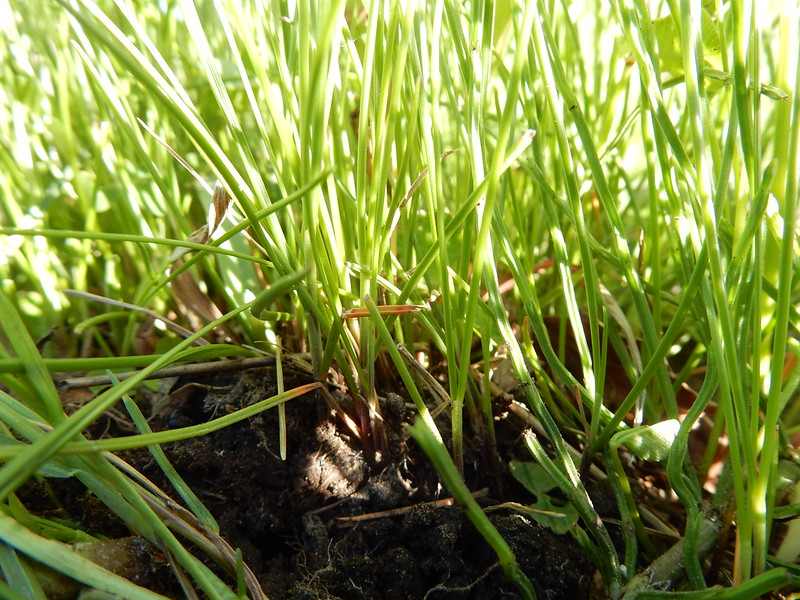
Photo Credit: Matt Lavin / Flickr / CC BY-SA 2.0
Creeping red fescue falls under the fine fescue category of turfgrass. It’s a cool-season grass that thrives in shade, so it’s ideal for yards that have thick tree canopies.
Creeping red fescue grass also requires little maintenance. It needs just 4 to 6 hours of direct daily sunlight. If your yard receives more sunlight than this, you’ll need to water your grass more often. On the downside, it’s not as durable as other grasses.
- Classification: Cool-season grass
- Spreads by: Rhizomes
- Shade tolerance: High
- Drought tolerance: High
- Foot traffic tolerance: Low
- Maintenance needs: Low
- Mowing height: At least 2 inches
- Potential for disease: Moderate
4. Buffalograss
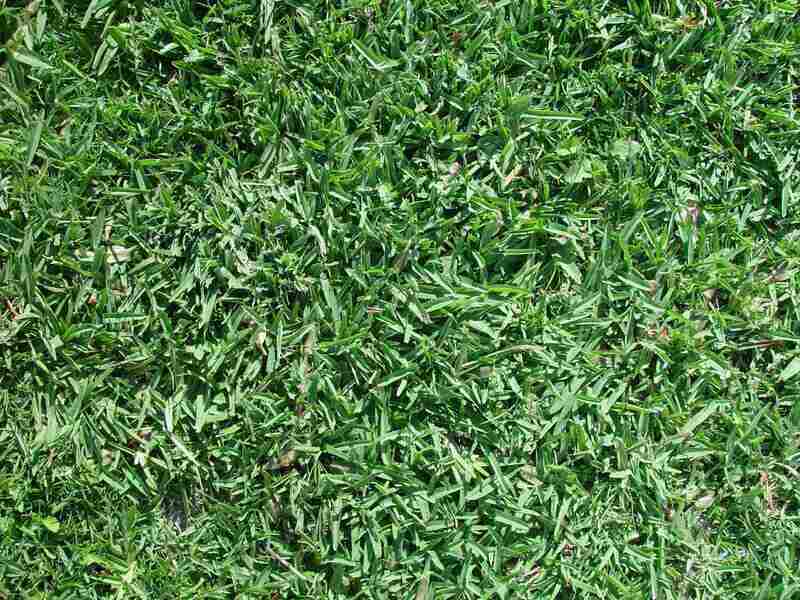
Photo Credit: Pixnio
Buffalograss is a warm-season, low-maintenance grass that can survive extreme heat. It resists cold better than other warm-season grasses and grows well in clay soil. Use a complete fertilizer between late August and mid-September to maintain the green color of this grass during winter.
Buffalograss is durable and soft on bare feet. You should not overwater buffalograss as it can spawn weeds.
- Classification: Warm-season grass
- Spreads by: Stolons
- Shade tolerance: Low
- Drought tolerance: High
- Foot traffic tolerance: Low
- Maintenance needs: Low fertilizer and mowing needs. Develops thatch and requires weed control
- Mowing height: 2 to 3 inches
- Potential for disease: Good resistance against diseases and insects
5. Centipedegrass
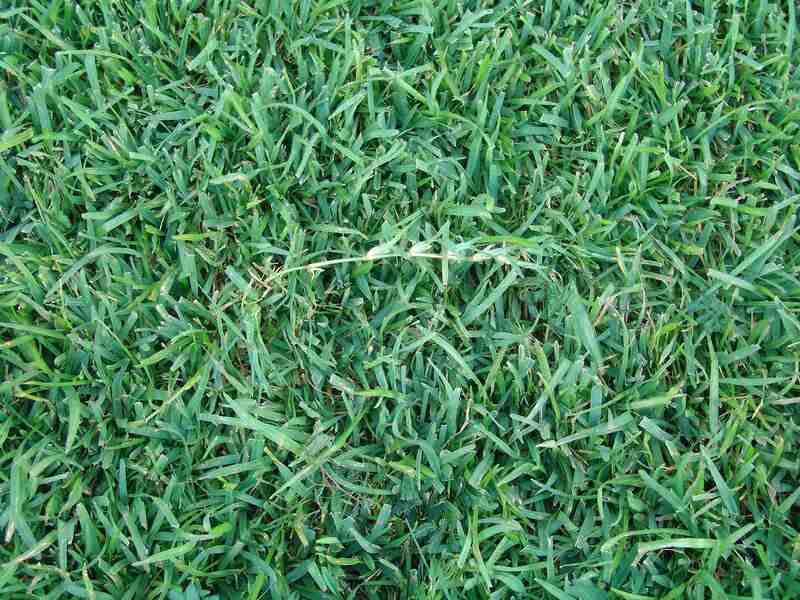
Photo Credit: James Becwar JamesBecwar / Wikimedia Commons / CC0
Centipedegrass is a light green, warm-season grass that grows well in direct sunlight. It is more sensitive to cold than other warm-season grasses on this list.
Centipedegrass grows slowly, taking about 2 years to form a solid turf. It’s a low-maintenance grass, but since it takes a long time to grow, you should keep the weeds in check. One note of caution: It doesn’t withstand heavy foot traffic, so, avoid Centipedegrass if you use your lawn heavily.
- Classification: Warm-season grass
- Spreads by: Stolons
- Shade tolerance: Moderate
- Drought tolerance: Moderate
- Foot traffic tolerance: Low
- Maintenance needs: Moderate
- Mowing height: Set the mowing height between 1 and 2 inches
- Potential for disease: Moderate
6. Bermudagrass
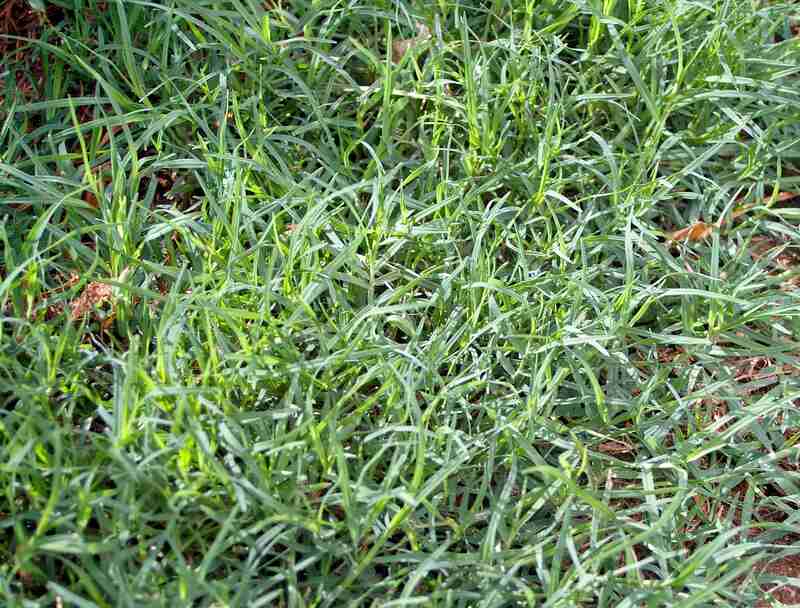
Photo Credit: Bidgee / Wikimedia Commons / CC BY-SA 3.0
Bermudagrass is a warm-season grass that loves full sunlight. It is excellent at tolerating foot traffic but requires frequent mowing. Bermudagrass has the fastest growth rate of any common warm-season grass.
This grass looks beautiful during warmer months but turns brown during winter. You should apply fertilizer during early fall to maintain the thickness of the lawn as the weather gets colder and to keep the weeds under control.
- Classification: Warm-season grass
- Spreads by: Stolons and rhizomes
- Shade tolerance: Low, thrives in full sun
- Drought tolerance: High
- Foot traffic tolerance: High
- Maintenance needs: Needs frequent mowing due to fast growth rate, develops thatch easily, and needs regular fertilization
- Mowing height: Set the mowing height between 0.5 and 1.5 inches for hybrid Bermuda grass cultivars. Mow common Bermudagrass to a height of 1.5 to 2.5 inches
- Potential for disease: Good resistance to disease. Low resistance to insects
FAQs About Knoxville Grass Types
You can opt for cool-season or warm-season grass types, depending on the characteristics of your environment. Most areas in Knoxville are better suited for cool-season grasses.
Creeping red fescue tolerates shade very well.
Buffalograss is a warm-season low-maintenance grass. Creeping red fescue is a cool-season low-maintenance grass.
If your Knoxville lawn experiences high foot traffic, you can prefer centipede grass and Bermuda grass.
Buffalograss, centipedegrass, Bermudagrass, and creeping red fescue turf grasses have a high tolerance to drought.
Choose the Right Grass Type for Your Knoxville Lawn
Since Knoxville is part of the transition zone, you should consider many factors when choosing grass for your lawn. Generally, cool-season grasses like tall fescue, Kentucky Bluegrass (KBG), and creeping red fescue tend to perform the best in Knoxville.
KBG can be a great choice for Knoxville lawns when mixed with tall fescue seed mixture at a ratio of 90:10, tall fescue to KBG.
Besides choosing the right grass type, you should also select the right plants for your Knoxville yard to make it look complete.
Keep your lawn lush and healthy with services from Wikilawn Knoxville lawn care experts.
Main Photo Credit: Brian Stansberry / Wikimedia Commons / CC BY 3.0